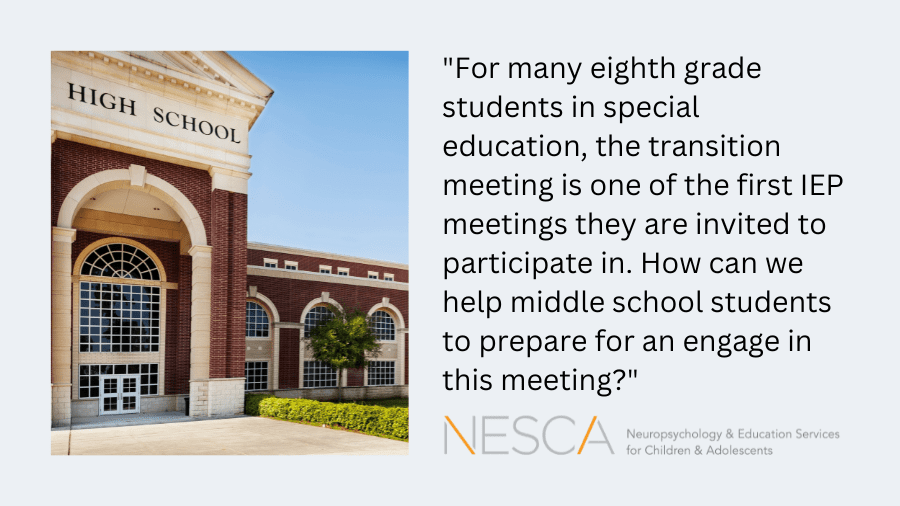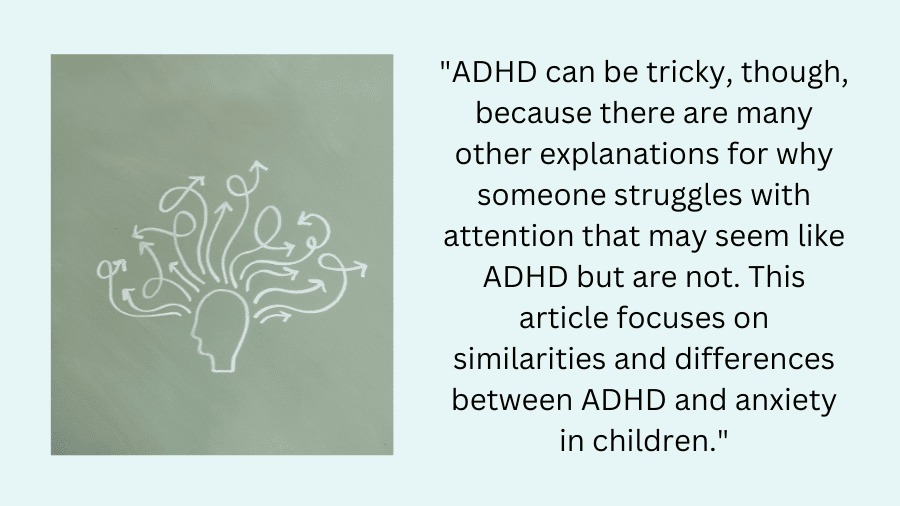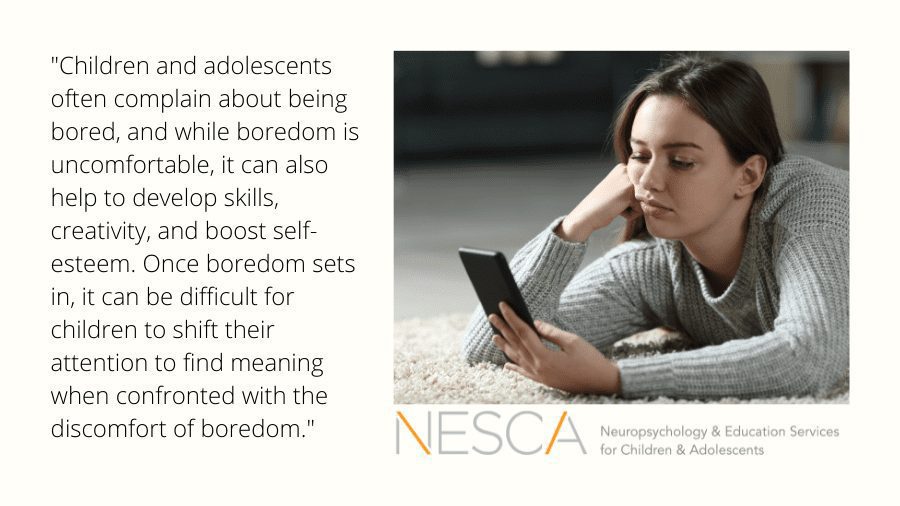
 By: Alissa Talamo, PhD
By: Alissa Talamo, PhD
Pediatric Neuropsychologist, NESCA
Both an Individualized Education Program (IEP) and a 504 Plan can provide supports for students in grades K-12 who are struggling in school, to ensure the student is able to receive “free and appropriate public education (FAPE).” However, not all students who are struggling will qualify for these supports.
An IEP provides a plan for students who require special education supports and direct related services to meet their unique needs, and these supports need to be provided at no cost to the family.
There are two requirements a child must meet to qualify for an IEP. The student must have one or more of the 13 disabilities noted in The Individuals With Disability Education Act (IDEA), which is the federal special education law for children with disabilities. Some of the disabilities listed include a Specific Learning Disability, autism (ASD), other health impairment (e.g., AD/HD), speech or language impairment, or an intellectual disability (for a full list of the 13 disabilities, see https://www.doe.mass.edu › sped › definitions). The second requirement is that the disability must affect the child’s educational performance and/or ability to learn and benefit from the general education curriculum, meaning the child must need specialized instruction to make progress in school. The IEP sets learning goals and describes the services the school will provide. Some components the IEP must include are: how the child is currently performing in school (e.g., academic and functional performance) along with annual education goals and services the child will receive. Additionally, the school will track progress toward those goals and the IEP team must review the IEP at least once a year.
A 504 Plan stems from Section 504 of the Rehabilitation Act of 1973. This is a federal civil rights law to stop discrimination against people with disabilities and requires the school to provide support and remove barriers for a student with a disability. A 504 Plan provides services and changes to the learning environment to enable students to learn alongside their peers. As with an IEP, a 504 plan is provided at no cost to families. There are two requirements to be eligible for a 504 Plan. A child has any disability, and the disability must interfere with the child’s ability to learn in a general education classroom. According to Section 504, the disability must substantially limit one or more basic life activities. Because the definition of disability is broader on a 504 Plan, a child who does not qualify for an IEP might still be eligible for a 504 Plan. In general, a 504 Plan is a good option for students with disabilities who do not require specialized instruction but do need specific accommodations to receive FAPE (e.g., extended time on tests, larger print text, priority seating close to the front of the classroom).
To determine if your child would qualify for an IEP or 504, it is important that they receive a thorough evaluation (cognitive, educational, functional, social/emotional, etc.) to determine their level of need. This evaluation can be completed through the public school system or an independent evaluator.
Sources:
www.understood.org
https://www.mpgfirm.com/back-to-basic-rights-iep-vs-504/
About the Author

With NESCA since its inception in 2007, Dr. Talamo had previously practiced for many years as a child and adolescent clinical psychologist before completing postdoctoral re-training in pediatric neuropsychology at the Children’s Evaluation Center.
After receiving her undergraduate degree from Columbia University, Dr. Talamo earned her doctorate in clinical health psychology from Ferkauf Graduate School of Psychology and the Albert Einstein College of Medicine at Yeshiva University.
She has given a number of presentations, most recently on “How to Recognize a Struggling Reader,” “Supporting Students with Working Memory Limitations,” (with Bonnie Singer, Ph.D., CCC-SLP of Architects for Learning ), and “Executive Function in Elementary and Middle School Students.”
Dr. Talamo specializes in working with children and adolescents with language-based learning disabilities including dyslexia, attentional disorders, and emotional issues. She is also interested in working with highly gifted children.
Her professional memberships include MAGE (Massachusetts Association for Gifted Education), IDA (International Dyslexia Association), MABIDA (the Massachusetts division of IDA) and MNS (the Massachusetts Neuropsychological Society).
She is the mother of one college-aged daughter.
To book a consultation with Dr. Talamo or one of our many other expert neuropsychologists, complete NESCA’s online intake form.
Neuropsychology & Education Services for Children & Adolescents (NESCA) is a pediatric neuropsychology practice and integrative treatment center with offices in Newton and Plainville, Massachusetts, Londonderry, New Hampshire, and Burlington, Vermont, serving clients from preschool through young adulthood and their families. For more information, please email info@nesca-newton.com or call 617-658-9800.



 from elementary school through young adulthood. In addition to direct client work, Ms. Badamo provides consultation and support to parents and families in order to help change dynamics within the household and/or support the special education processes for students struggling with executive dysfunction. She also provides expert consultation to educators, special educators and related professionals.
from elementary school through young adulthood. In addition to direct client work, Ms. Badamo provides consultation and support to parents and families in order to help change dynamics within the household and/or support the special education processes for students struggling with executive dysfunction. She also provides expert consultation to educators, special educators and related professionals.
 Erin Gibbons, Ph.D.
Erin Gibbons, Ph.D.
 extensive experience working with children and adolescents with a range of learning and social/emotional abilities. Kristen’s strengths lie in her communication and advocacy skills as well as her strengths-based approach. She is passionate about developing students’ self-awareness, goal-setting abilities, and vision through student-centered counseling, psychoeducation, social skills instruction, and executive functioning coaching. Mrs. Simon has particular interests working with children and adolescents on the Autism spectrum as well as individuals working to manage stress or anxiety-related challenges.
extensive experience working with children and adolescents with a range of learning and social/emotional abilities. Kristen’s strengths lie in her communication and advocacy skills as well as her strengths-based approach. She is passionate about developing students’ self-awareness, goal-setting abilities, and vision through student-centered counseling, psychoeducation, social skills instruction, and executive functioning coaching. Mrs. Simon has particular interests working with children and adolescents on the Autism spectrum as well as individuals working to manage stress or anxiety-related challenges.

 M.A. from Antioch New England in Applied Psychology. She also worked as an elementary school counselor and school psychologist for 15 years before embarking on her doctorate. During her doctorate, she did her pre-doctoral internship with RIT in Rochester, N.Y. where she worked with youth ages 5-17 who had experienced complex developmental trauma. Dr. Hess’s first post-doctoral fellowship was with The Counseling Center of New England where she provided psychotherapy and family therapy to children ages 5-18, their families and young adults. She also trained part-time with a pediatric neuropsychologist conducting neuropsychological evaluations.
M.A. from Antioch New England in Applied Psychology. She also worked as an elementary school counselor and school psychologist for 15 years before embarking on her doctorate. During her doctorate, she did her pre-doctoral internship with RIT in Rochester, N.Y. where she worked with youth ages 5-17 who had experienced complex developmental trauma. Dr. Hess’s first post-doctoral fellowship was with The Counseling Center of New England where she provided psychotherapy and family therapy to children ages 5-18, their families and young adults. She also trained part-time with a pediatric neuropsychologist conducting neuropsychological evaluations.





 Londonderry, NH office. She specializes in the evaluation of anxious children and teens, working to tease apart the various factors lending to their stress, such as underlying learning, attentional, or emotional challenges. She particularly enjoys working with the seemingly “unmotivated” child, as well as children who have “flown under the radar” for years due to their desire to succeed.
Londonderry, NH office. She specializes in the evaluation of anxious children and teens, working to tease apart the various factors lending to their stress, such as underlying learning, attentional, or emotional challenges. She particularly enjoys working with the seemingly “unmotivated” child, as well as children who have “flown under the radar” for years due to their desire to succeed.
 unique pattern of strengths and weaknesses to best formulate a plan for intervention and success. With experiences providing therapy and assessments, Dr. Creedon bridges the gap between testing data and therapeutic services to develop a clear roadmap for change and deeper of understanding of individual needs.
unique pattern of strengths and weaknesses to best formulate a plan for intervention and success. With experiences providing therapy and assessments, Dr. Creedon bridges the gap between testing data and therapeutic services to develop a clear roadmap for change and deeper of understanding of individual needs.
Connect with Us